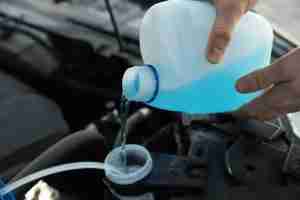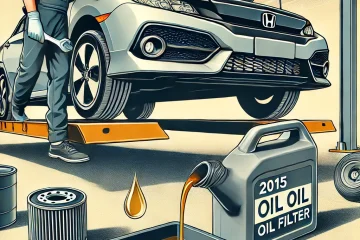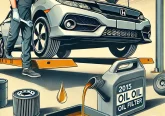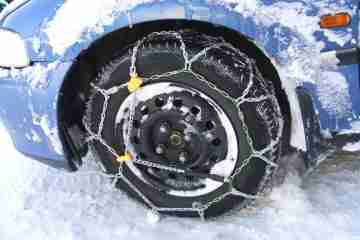Can You Put Water in the Coolant Tank? Find Out Here

Can You Put Water in the Coolant Tank?
Your car radiator is overheating, but you have no coolant. What do you do?
Many drivers argue about the use of water in this situation. Some believe that it will damage your vehicle, while others insist that water is fine in an emergency. Today we’re going to clear this up for good.
The short answer is yes; you can use water instead of coolant. But you should only do so if you have no coolant or antifreeze available. It’s also important to know what you’re doing. Otherwise you can hurt yourself and damage your vehicle.
Let’s look at everything you need to know about using water in this stressful situation.
Why Do We Use Coolant?

A coolant is a special fluid that keeps your engine within its operating temperature range. It’s alcohol-based and is usually green or blue in color. This liquid flows through your vehicle’s cooling system, gathering heat along the way. Then, it passes through the radiator, where the air stream from the vehicle’s grill cools the hot liquid down. Finally, the coolant flows back into the engine to repeat the cycle.
Coolant also increases the boiling point of water. This means that your engine can go for longer without overheating. Without coolant, the heat from constant internal combustion would destroy the engine. They also contain antifreeze, so your engine is effective in all weathers. Most coolants also help to prevent corrosion.
You should use a balanced combination of coolant and water for maximum effectiveness. Neither liquid is as effective at dissipating heat by itself. Water is also full of contaminants which can cause long-term damage and significant expense. Overfilling your radiator with water will also dilute the remaining coolant. This will reduce its effectiveness.
What If It’s An Emergency?
If you have no coolant, then you can and should use water.
Distilled water is preferable because it is of a higher quality than tap water and is less corrosive. A safe rule to follow is only to use water that you would be comfortable drinking yourself.
You should bring your vehicle to the mechanic as soon as possible and refill your radiator with the correct ratio of coolant and water. Remember that water has a lower boiling point than coolant. This increases the risk of the vehicle overheating again.
How Do I Fill my Radiator with Water?
Follow these steps to safely fill your radiator with water –
- Pull over as soon as your engine temperature reaches an unsafe level.
- Give the engine time to cool and check the coolant overflow reservoir level.
- Put on the appropriate protective equipment.
- Ensure that there is no steam emerging from the engine before you approach it.
- Locate the coolant recovery tank. Don’t touch it if it is still boiling because this may cause burns.
- Use a towel or thick cloth to remove the radiator cap. Allow the pressure to release before fully removing the cap. Coolant can sputter and is very hot.
- Pour water into the radiator up to the fill line. Remember to use the highest quality of water available.
- Replace the radiator cap and close the bonnet before continuing your journey.
- Visit a mechanic as soon as possible to flush your radiator and refill it with the correct ratio of coolant and water.
Protecting Your Radiator
Only use water instead of coolant if you have no other choice. There are some ways you can preserve the integrity of your radiator and reduce the risk of damage.
Firstly, avoid traveling long distances when your radiator is compromised. If this isn’t an option, take regular breaks to give your vehicle a chance to cool down. Also, try not to drive uphill as this will increase stress and the risk of overheating. Take your vehicle to a technician as soon as you can. They will replace the excess water with coolant and repair any potential damage to the radiator.
Ensure that the radiator is flushed before you refill it with water. It’s important to flush aluminum radiators on a regular basis to reduce their risk of failure.

Even if you can flush your radiator yourself, it’s still advisable to see a technician. They will identify why your coolant levels were low in the first place. Otherwise, it’s possible that the heater and engine will suffer damage too.
Flushing Your Radiator
If you don’t have access to a technician, it’s possible to flush your radiator yourself.
Here’s a step-by-step guide to reducing risk to you and your vehicle –
- Wait until the engine is cool. Put on protective wear like gloves and goggles.
- Open the radiator drain cap.
- Unscrew the cylinder block drain plug.
- Flush the system with clean water or a flushing compound.
- Ensure the radiator is empty before sealing the drains.
- Refill the radiator with the appropriate ratio of water and coolant.
Final Thoughts
In an ideal world, you should use a combination of coolant and water. This is the best way to preserve the integrity of your engine. However, you can use water by itself for a short time if there’s no other option.
Some coolants should not be mixed with other brands. Consult your owner’s manual to ensure you’re using the type that is suitable for your car. Most sources advocate a coolant to water ratio of 60/40 or 50/50. Again, you should consult your vehicle manual or with your mechanic before refilling your radiator.
Remember to change your coolant every 40,000 to 100,000 miles. This way, you can potentially avoid ever having to use water by itself. Ensure that you always keep the appropriate safety equipment in your vehicle for emergencies. High-visibility vests, protective gloves, and goggles are much cheaper than a visit to the hospital.
It’s also advisable to keep a container of coolant in your vehicle so that you’re always prepared.
Follow the steps as outlined above so that you and your vehicle’s radiator stay healthy!













No Comment